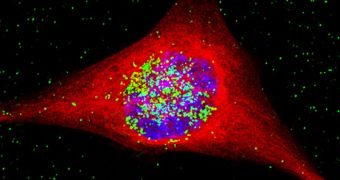In a paper published in the journal Nanoscale earlier this week, researchers detail the use of a so-called Trojan horse-like treatment to kill tumor cells linked to a highly aggressive form of brain cancer.
In their paper, specialists with the University of Cambridge in the UK explain that the type of brain cancer they successfully treated in laboratory conditions is known to the scientific community as gliobastoma multiforme.
This type of cancer is so aggressive that most of the people who develop it pass away just a few months after being diagnosed with this condition. Besides, just 6 out of 100 people survive their diagnosis for over 5 years.
As part of their experiments, University of Cambridge scientists first collected a few glioblastoma multiforme tumor cells from people suffering from this type of cancer and encouraged them to grow in laboratory conditions.
Just when the tumors thought that life could not get any better, the researchers revealed their sadistic side. In a nutshell, they introduced them to an army of nanoparticles specifically engineered to make mincemeat of the cancer cells.
These nanoparticles comprised both gold and a conventional chemotherapy drug by the name of cisplatin. When exposed to radiotherapy, the gold in nanoparticles released electrons that caused irreparable damage to the cells' anatomy and even DNA.
The result was that the chemotherapy drug that the gold nanoparticles were made to carry had an easier time targeting the tumor cells and destroying them. 20 days after this blitz attack, the cancer cells showed no signs of recovery.
Hence, it was concluded that the Trojan horse treatment had successfully destroyed this batch of laboratory-grown glioblastoma multiforme tumor cells. It is believed that, sometime in the future, the treatment could be administered to human patients.
Still, the University of Cambridge scientists behind this research project stress that there is plenty of work to be done and that, as encouraging as the outcome of this series of experiments might be, it will probably be a while before the treatment becomes available to the general public.
“The combined therapy that we have devised appears to be incredibly effective in the live cell culture. This is not a cure, but it does demonstrate what nanotechnology can achieve in fighting these aggressive cancers,” said specialist Mark Welland, as cited by Phys Org.
“By combining this strategy with cancer cell-targeting materials, we should be able to develop a therapy for glioblastoma and other challenging cancers in the future,” the Professor of Nanotechnology and Fellow of St John's College, University of Cambridge, added.

 14 DAY TRIAL //
14 DAY TRIAL //